
Drums, Bees, and the Cold War
An overview of the exhibition for the Köler Prize 2016, Estonia’s premier contemporary art award
01/06/2016
Estonia’s Contemporary Art Museum (Eesti Kaasaegse Kunsti Muuseum – EKKM) is the traditional host of the yearly exhibition (open through June 6) featuring the nominees for the Köler Prize, with 2016 being the sixth year in which the works of five Estonian artists were vetted by a panel of judges. This year’s nominees were: Art Allmägi, Krista Mölder, Kristi Kongi, Laura Põld, and Raul Keller.
The judging panel evaluates two works by each artist, with both works being presented in the exhibition. One of the pieces must have been created within the last three years, and it should represent the artist’s heretofore body of work; the second piece is to have been created specially for the Köller Prize, it cannot have been previously shown in a public venue, and it must illustrate its creator’s artistic development, as well as continuity in terms of previous accomplishments. After evaluating the two submitted and exhibited works, the international panel of judges awards one artist with the Grand Prix; in addition, viewers of the exhibition also have the opportunity to vote for their favorite, the winner of which then receives the People’s Choice Award. On May 27 of this year, two new artists were awarded these prizes in a ceremony that took place in the courtyard of EKKM.
Estonia has several artist awards. The main aim of the Köler Prize is to popularize contemporary art and to bring recognition to Estonian artists or artist groups actively working in Estonia. To qualify for nomination, the artists must be either Estonian-born or be living in Estonia on a permanent basis.
It was impossible to predict who of the five nominees would win this year’s Prize, since each artist was equally creative and unique, with very different bodies of work and focus points. Before we announce who ended up winning the two top prizes, we’d like to present a brief overview of the five Köler Prize nominees for 2016.
Art Allmägi
Cold War / Холодная война. (2014) and Холодная война / Cold War. (2016)
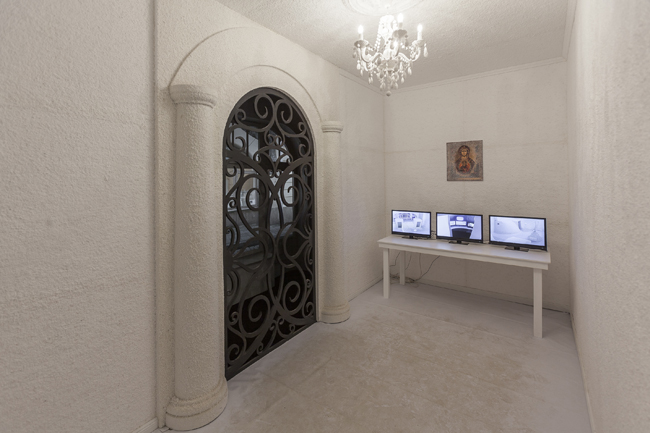
Art Allmägi. Холодная война / Cold War. 2016. Installation, artist’s personal technique. EKKM publicity photo
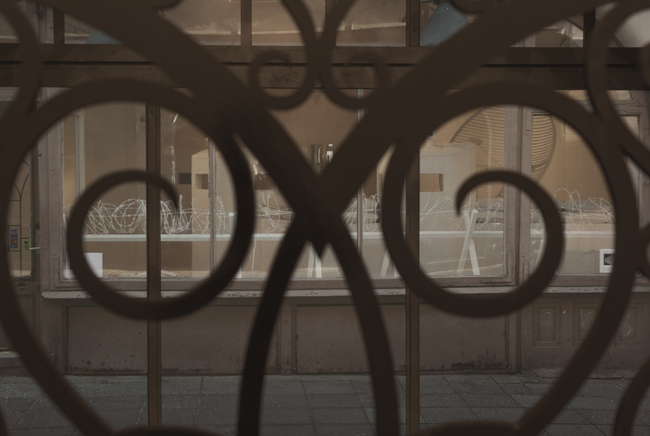
Art Allmägi. Cold War / Холодная война. 2014. Installation, artist’s personal technique. EKKM publicity photo
Art Allmägi belongs to the new generation of Estonian installation artists. Both of his works in the Köler Prize Exhibition essentially create a new world, bringing the viewer into a different reality. The installation “Cold War” was first shown in 2014, in the Draakoni gallery, which is located directly across the street from the Russian Embassy in Tallinn. At that time, the events taking place in Ukraine were causing great alarm, and the feeling in the air was one of possible invasion of the Baltic States. In the gallery, the room’s walls had been covered with a special white material, and sandbags had been placed throughout the room; the window facing the facade of the Russian Embassy was covered in barbed wire. Security cameras, a huge rotating receiver and monitors that showed who had entered the gallery’s space were also set up. The artist had created an apocalyptic war scene – perhaps, an exaggerated and absurd one. For the Köler Prize, Allmägi created a continuation of the installation by developing the idea further and envisioning the scene from the other side: while walls, a small room, a table on top of which sit computers with videos from surveillance cameras, a huge crystal chandelier, and a Russian Orthodox icon hung on the wall; one one side of the room – a caged metal door through which one can see the Draakon gallery. Looking at Allmägi’s pre-apocalyptic, albeit existing worlds, it would be difficult to label the artist as a critic; instead, with his works of art, he shows us stereotypes and viewpoints that currently prevail in society.
Krista Mölder
“Being Present” (2012), and “Inter-space” (2016)
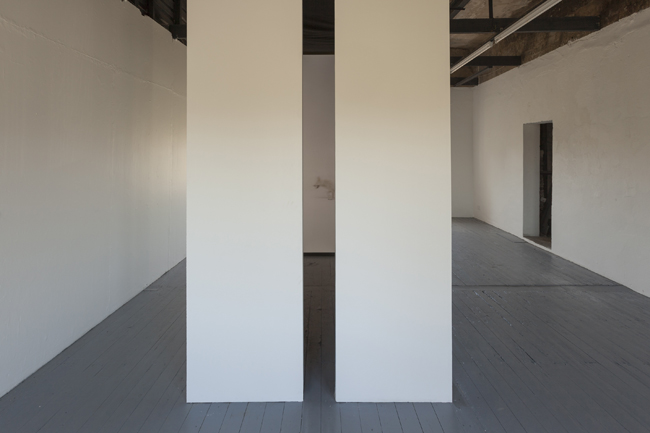
Krista Mölder. “Inter-space” 2016. Installation, pigment prints from negatives, video, space. EKKM publicity photo
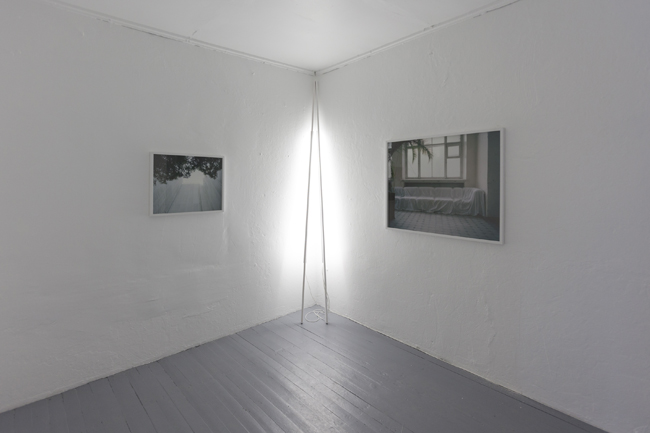
Krista Mölder. “Being Present” 2012. Pigment prints from negatives. EKKM publicity photo
If Allmägi’s installations gave the impression of an already existing process or the inevitability of a sequence of events, Krista Mölder’s works had the sense of the moment before something happens. In the photographs of “Being Present”, we’re looking at a point in time in which it appears that nothing is going on; however, one can’t shake the feeling that things could change at any moment. The same holds true for the installation “Inter-space” – a supposedly empty space, but quite possibly, something may soon occur in it.
Kristi Kongi
“I Haven’t Moved My Head From the Pillow” (2012) and “Vision Through Tears” (2016)
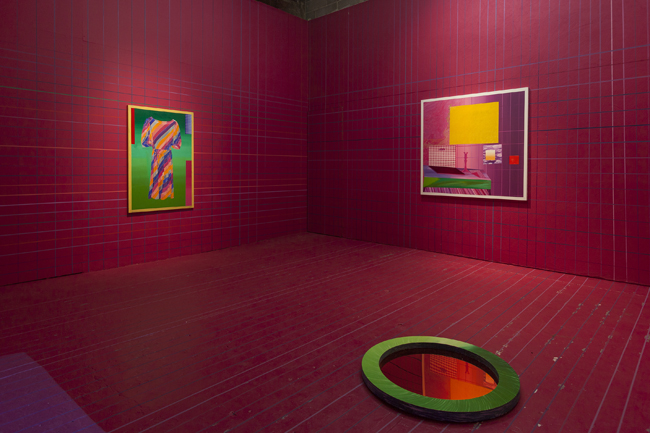
Kristi Kongi. “Vision Through Tears”. 2016. Visual essay. EKKM publicity photo
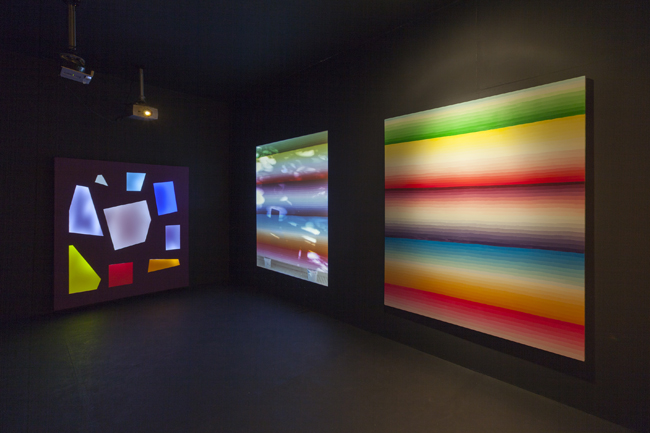
Kristi Kongi. “I Haven’t Moved My Head From the Pillow”. 2012. Painting installation, canvas, oil, video, light object. EKKM publicity photo
In looking at Kristi Kongi’s works in the exhibition, and reading the write-up on her creative body of work and ideas (as written by Eero Epner in the show’s catalog), what stands out is how Kongi creates a dialog between her paintings and the space in which they are exhibited. Kongi’s works are not just paintings, but also installations – and the reverse is true as well: to understand the paintings, one must be in a certain space. The aesthetic experience is not dependent upon one object, but rather on the painting’s overall effect and the physical world surrounding it. [1] Kongi plays with color and light that exist in reality, but which are not noticed in everyday life; in her paintings, she captures various optical and visual phenomena. In this exhibition, Kongi seems to be heading away from painting; for instance, in her work “Vision Through Tears”, she uses painting only as an instrument for realizing the phenomenon of space – a situation that could elicit various reactions of experience. At the same time, this experience is brief and fleeting, as dictated by the specifics and changing environment of the space. In the exhibition catalog, Epner points out that Kongi’s works either do not have literary content, or else they are misleading – Kongi’s works do not “say” anything [2], yet different color theories, the physical world, and random events in nature all converge in them.
Laura Põld
“The Night Your Mate Danced Like a Tree” (2014) and “Beam Caused by the Flight of a Bee Around a Pomegranate a Second Before Awakening” (2016)
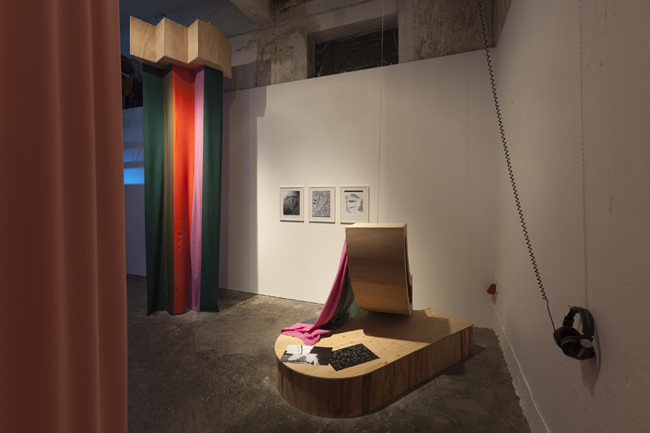
Laura Põld. “The Night Your Mate Danced Like a Tree”. 2014. Plywood, cloth, black and white prints. EKKM publicity photo
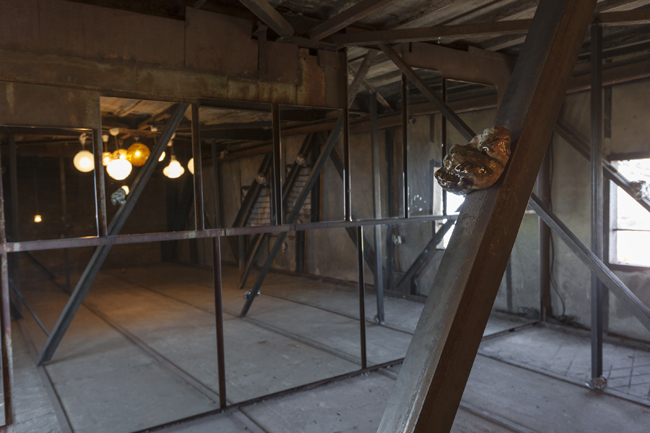
Laura Põld. “Beam Caused by the Flight of a Bee Around a Pomegranate a Second Before Awakening”. 2016. Installation, lamps, steel, ceramics, found objects, mirrors, sound. EKKM publicity photo
If in the works of the above-mentioned artists there were clear signs of either a signature style or a link between the older and the newer work, then both of Laura Põld’s works were completely autonomous, without any connection or developmental link. Eero Epner writes that in Põld’s creations, it is impossible to find any similarities, nor sources from which the relevant works were created. In her art, the world is a whole that is being continually rearranged – where materials, objects and things are always placed in new spatial configurations and contexts. One could say that Põld’s pieces work like a conceptual aggregate – an object’s meaning and role become visible only in relation to other objects. [3]
Raul Keller
“Platform” (2016) and “Six Drums” (2016)
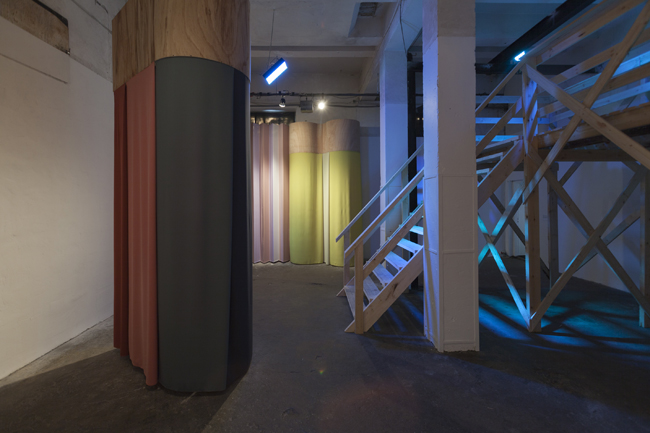
Raul Keller. “Platform”. 2016. Installation; Laura Põld. “The Night Your Mate Danced Like a Tree”. 2014. EKKM publicity photo
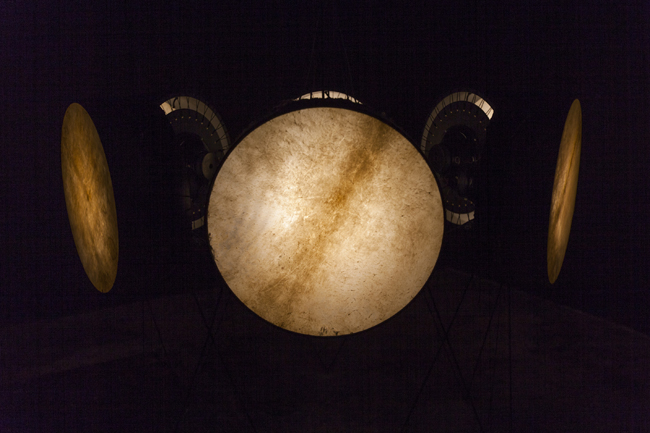
Raul Keller. “Six Drums”. 2016. A six-channel sound installation, leather, paper, plywood, rpe, speakers, LED lights. EKKM publicity photo
Raul Keller is known as a sound artist. For the Köler Prize Exhibition, he created the work “Platform”; in a different context or in a different space, perhaps it would have been easier to assess the piece, but in this case, the artwork lost-out by being placed next to Laura Põld’s object installation. Keller’s other work, on the other hand – “Six Drums” – integrated very well with Art Allmägi’s artwork, which could only be accessed by going through Keller’s installation. The combination of the exhibition space, minimal LED-lighting and sound made for a very powerful experience.
In judging the exhibition as a whole, even though each room and each artist’s works are autonomous entities, it does succeed in creating a unified impression. The exhibition does not have one curator – it is the result of the collaborative work of the entire EKKM team and the represented artists. Each of the artists is different, but on a certain level, they are all connected by the space and an overstepping of a specific mental or physical boundary.
While waiting for the winner to be announced, it could be felt in the room that there was no one clear leader or favorite – the exhibition was diverse and very encompassing, and the level of artistry was equally high among all five nominees, making the selection of a winner a difficult task, indeed. Nevertheless, on the evening of May 27, two prize winners were announced: The People’s Choice Award went to Art Allmägi, while the Grand Prix was awarded to Laura Põld.
[1] Epner E., Köller prize 2016 catalog. Tallinn: EKKM, 2016 – P 7
[2] Epner E., Köller prize 2016 catalog. Tallinn: EKKM, 2016 – P 23
[3] Epner E., Köller prize 2016 catalog. Tallinn: EKKM, 2016 – P 11